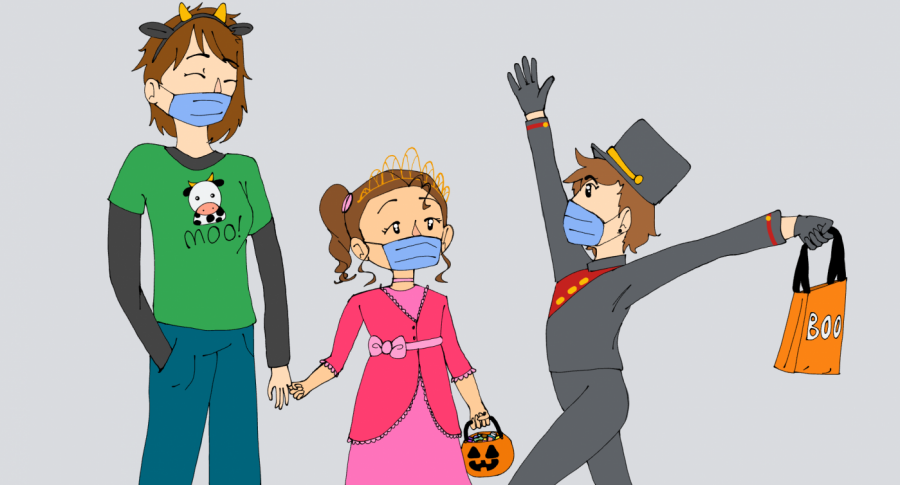Opinion: Trick-or-treat safely, or don’t trick-or-treat
As Halloween approaches and COVID continues, consider safety when deciding whether or not to go trick-or-treating
With the current state of the pandemic, many are wondering if trick-or-treating is even a good idea, let alone what it would look like this year.
With Halloween right around the corner, kids are getting excited about traditional festivities. However with covid numbers still climbing it’s hard to depict where lines have to be drawn. Schools, sports, and activities are starting to meet again, so trick-or-treating doesn’t seem out of bounds. Still, it could be difficult to maintain social distancing while going door to door. Trick-or-treaters who live in an area with a high number of cases or aren’t going to participate safely should skip this year to stop the spread of the virus.
Following new guidelines from the CDC states and cities have already made regulations concerning Halloween festivities. Reporters at USA Today explain that major events in 37 states have been canceled. State health officials are providing different plans, some saying to avoid trick-or-treating altogether while others provide safety tips. Whatever their plan is, it’s likely impossible to make everyone cooperate.
It’s hard to trick or treat while continuing to social distance. This makes it unsafe especially when kids and adults aren’t wearing masks. “Hopefully, your ‘trick or treat?’ interaction at any given doorway or front porch is very brief,” Zee Krstic says at Good Housekeeping, “which means there’s less risk here. But the more households you visit, the greater the chance that germs may be spread and longer — especially as others head from door to door too,”
Some cities have a larger increase in cases than others, so it’s also good to look into your area and figure out whether it’s safe enough to go out. If your city’s cases are spiking and the risks are higher, it’s not good to expose yourself and others. “When we get down to the discussion around Halloween,” Jared Muenzer, pediatric emergency room doctor and physician-in-chief at Phoenix Children’s Hospital, told the Washington Post. “It’s really knowing about your own environment and what’s going on in your neighborhood in your area to really make decisions whether or not to trick-or-treat,”.
Trick-or-treating is a high-risk activity when it comes to Halloween festivities. However, there are alternative activities to participate in that would be less dangerous. Rudri Patel writes in the Washington Post, “Though the CDC listed trick-or-treating as a higher-risk activity (along with trick-or-treats crowded indoor costume parties and haunted houses), there are plenty of Halloween traditions it listed as ‘lower risk.’” Some of these include carving pumpkins, putting on a Halloween scavenger hunt, and having a movie night.
It doesn’t seem that trick-or-treating would have a big risk because of it being mostly outdoors. And although it is safer to be outside during the pandemic, going door-to-door and coming in contact with lots of people is risky. “But we may still have to adapt the way we distribute candy,” Krstic adds, “as CDC officials maintain that having children head door to door comes with the most risk this Halloween.”
Halloween is always a great holiday for kids to get together and join in activities. But meeting door to door for trick-or-treating has one of the highest risk factors. As a result, skipping out this year or finding alternate activities is the safest option. However, if you are planning on going out, social distancing, wearing a mask, and sanitizing, will make your experience much safer.



